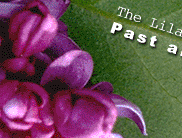





 | ||||||||
|
||||||||
 | ||||||||
|
The Wild Lilacs These shrubs are the wild ancestors of the lilacs we grow in our gardens today. The genus Syringa has 20 species growing wild in central and southeastern Europe and the Far East. Lilacs from the Far East Oriental lilacs differ from European species in size, shape, and even scent. The mountainous forests of China’s vast interior are home to a number of lilac species. Most were "discovered" by British and American plant hunters in the late 1800s, including British adventurer Earnest H. Wilson, though some discoveries are as recent as the 1970s. Seeds, seedlings and cuttings from these plants were brought back to botanical gardens, especially Kew (England), Paris, St. Petersburg and Harvard’s Arnold Arboretum. These lilacs revolutionized lilac breeding in the late 1800s by expanding the quantity and variety of species for breeders to cross. |
European lilacs Though there are 20 species of wild lilacs, most people recognize just one — the common lilac (Syringa vulgaris). This Balkan native travelled here with the early settlers and was planted near the door of homesteads and cabins across much of North America. Pale purple and sweetly scented, it is the parent of the Hyacinthiflora hybrids and the single and double French hybrids. Europe’s other native is the Hungarian lilac (Syringa josikaea). Baroness von Josika is credited with discovering this lilac growing on her Transylvanian estate in 1826. |
|||||||||||||||||
|
||||||||||||||||||
 Introduction
Introduction